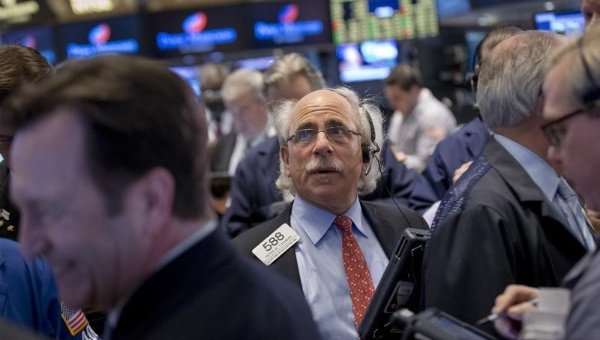On Wednesday, Shares of BlackBerry Ltd (NASDAQ:BBRY), gained 1.83% to $6.13.
BlackBerry declared that it has accomplished the acquisition of AtHoc, a leading provider of secure, networked crisis communications. AtHoc will operate as a division of BlackBerry. AtHoc’s Chief Executive Officer, Guy Miasnik, will lead the division as part of BlackBerry’s senior leadership team reporting to John Chen, Executive Chairman and Chief Executive Officer.
The AtHoc software platform enables people, devices and organizations to exchange critical information in real time during business continuity and life safety operations. The platform securely connects with a diverse set of endpoints, counting mobile devices running iOS and Android, PC and Mac desktops, digital displays, radios, IP phones, sirens, fire panels and speakers to facilitate partnership and enhance situational awareness. AtHoc is recognized as a “Leader” by industry analyst firm Gartner, and at the highest position for ability to execute on the firm’s Magic Quadrant for U.S. Emergency/Mass Notification Services.
AtHoc has customers around the world in both the public and private sectors, and is the leading crisis communications provider to the U.S. Departments of Defense (DoD) and Homeland Security (DHS). AtHoc assists safeguard millions of people and thousands of organizations, counting leading international corporations in high technology, heavy industry, and other mission critical industries counting healthcare institutions and the vast majority of U.S. federal agencies - counting the U.S. Department of the Treasury, U.S. Department of Energy, the Centers for Disease Control and the Food and Drug Administration.
BlackBerry Limited (BlackBerry) is a provider of mobile communications and services. The Company is engaged primarily in the provision of the BlackBerry wireless solution, consisting of smartphones, service and software. The Company’s four areas of business are Devices business, Enterprise Services, BlackBerry Technology Solutions (BTS) business and Messaging.
Shares of Wells Fargo & Co (NYSE:WFC), inclined 0.81% to $51.30, during its last trading session.
Wells Fargo & Company declared that its railcar finance, leasing and fleet administration business, First Union Rail, has signed a contract to purchase GE Railcar Services from GE Capital. The transaction, which will add to the existing fleet more than 77,000 railcars and just over 1,000 locomotives in addition to associated operating and long-term leases, is predictable to close by end of Q1 2016. Terms of the transaction are not being revealed.
Marmon Holdings, Inc., a Berkshire Hathaway company, separately declared that it has attained substantially all of GE Railcar Services’ owned fleet of railroad tank cars. In a separate transaction, Marmon has also agreed to acquire certain GE Railcar Repair Services repair and maintenance facilities.
“GE Railcar Services, with its high quality asset base, has a long history of strength and stability that will add significantly to the quality and diversification of our existing fleet,” said Barbara Wilson, president, First Union Rail. “We greatly value our client relationships and look forward to meeting the industry’s growing demand for rail cars.”
The acquisition of GE’s railcar and locomotive fleet will make First Union Rail the second largest and most diverse railcar and locomotive leasing company in North America. A division of Wells Fargo since 1994, over half of First Union Rail’s customers have relationships with other Wells Fargo businesses.
Wells Fargo & Company is a financial and bank holding company. Its principal business is to act as a holding company for its subsidiaries. The Company is a diversified financial services company. It has three operating segments: Community Banking, Wholesale Banking and Wealth, and Brokerage and Retirement. The Company provides retail, commercial and corporate banking services through banking stores and offices, the Internet and other distribution channels to individuals, businesses and institutions in all around 50 states, the District of Columbia and in other countries.
Shares of Merck & Co., Inc. (NYSE:MRK), inclined 1.48% to $49.37, during its last trading session.
Merck & Co. - The Carter Center, PAHO/WHO and the Mectizan Donation Program of Merck & Co., Inc. known as MSD outside the United States and Canada, are part of a coalition of organizations assisting countries in the Americas fight river blindness (onchocerciasis), and are calling for a final push to definitively eliminate transmission of the disabling disease from the Western Hemisphere.
“Today, four of the six river blindness-endemic countries in the Americas have eliminated transmission of the disease, but I am not ready to celebrate until the task is complete,” said former U.S. President Jimmy Carter, founder of The Carter Center, which has led the campaign to wipe out river blindness in Latin America through its Onchocerciasis Elimination Program for the Americas (OEPA). “Now is not the time to be complacent. It is the time to improvement our efforts.”
Onchocerciasis is a parasitic disease carried by biting black flies that breed in fast-flowing rivers and streams. It can cause intense itching and skin damage, nodules, eye damage, and eventually blindness. The disease disproportionately affects low-income communities in several Latin American countries and in Africa, contributing to the cycle of poverty by reducing affected individuals’ ability to work and learn. In the late 1990s, an estimated 500,000 people in six endemic countries of the Americas were at risk of onchocerciasis.
Merck & Co., Inc. is a global health care company. The Company offers health solutions through its prescription medicines, vaccines, biologic therapies and animal health products, which it markets directly and through its joint ventures. The Company’s Pharmaceutical segment includes human health pharmaceutical and vaccine products marketed either directly by the Company or through joint ventures.
Finally, Synaptics, Incorporated (NASDAQ:SYNA), ended its last trade with 27.31% gain, and closed at $82.46.
Chinese interest in Synaptics Inc. and Western Digital Corp. shows Beijing is accelerating efforts to buy the building blocks for a domestic technology industry, according to Bloomberg.
In the last two years, state-backed investors have committed about $39 billion to buying U.S. tech companies, according to a Bloomberg calculation. Synaptics rebuffed a $4 billion offer from a Beijing-backed investment group but talks are ongoing, according to people familiar with the matter.
Acquiring Synaptics, which makes touch screens, would assist Chinese phone makers compete with Apple Inc., while a $3.8 billion investment in Western Digital declared Wednesday would give China a stake in data storage. Those moves are part of a larger, multiyear effort by China to lessen its dependence on foreign technology, much the way Taiwan and South Korea did in the 1980s and 1990s. Efforts to build an industry organically haven’t paid off, said Stacy Rasgon, an analyst at Sanford C. Bernstein & Co., so the Chinese are looking to buy instead. Bloomberg Reports
Synaptics Incorporated developer and supplier of custom-designed human interface solutions that enable people to interact more easily and intuitively with a wide variety of mobile computing, communications, entertainment, and other electronic devices.
DISCLAIMER:
This article is published by www.wsnewspublishers.com. The Content included in this article is just for informational purposes only. All information used in this article is believed to be from reliable sources, but we make no representations or warranties of any kind, express or implied, about the completeness, accuracy, or reliability with respect to this article.
All visitors are advised to conduct their own independent research into individual stocks before making a purchase decision.
Information contained in this article contains forward-looking information within the meaning of Section 27A of the Securities Act of 1933 and Section 21E of the Securities Exchange Act of 1934, counting statements regarding the predictable continual growth of the market for the corporation’s products, the corporation’s ability to fund its capital requirement in the near term and in the long term; pricing pressures; etc.
Any statements that express or involve discussions with respect to predictions, expectations, beliefs, plans, projections, objectives, aims, assumptions, or future events or performance may be forward looking statements. Forward-looking statements are based on expectations, estimates, and projections at the time the statements are made that involve a number of risks and uncertainties, which could cause actual results or events to differ materially from those presently anticipated. Forward looking statements may be identified with such words as expects, will, anticipates, estimates, believes, or by statements indicating certain actions may, could, should/might occur.



